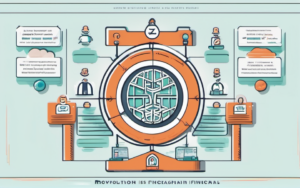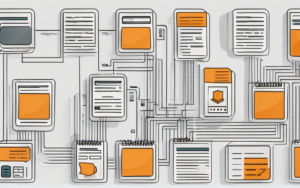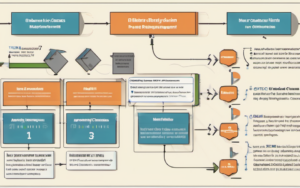Choosing the right blockchain platform is crucial for success. Understanding the nuances of different blockchain platforms is paramount before embarking on any blockchain project. This guide will help you navigate the complexities of evaluating blockchain platforms for your specific needs.
1. Introduction
1.1 What is Blockchain?
Blockchain technology is a decentralized, distributed ledger that records and verifies transactions across multiple computers. This eliminates the need for a central authority, enhancing security and transparency. Different blockchain platforms offer variations on this core concept, leading to diverse applications across various industries. Understanding these variations is key to selecting the right platform for your needs.
1.2 Why Evaluate Blockchain Platforms?
The landscape of blockchain platforms is vast and varied. Choosing the wrong platform can lead to significant technical challenges, increased costs, and ultimately, project failure. A thorough evaluation ensures that the chosen platform aligns with your project’s specific requirements, ensuring scalability, security, and efficiency. This is particularly important when considering applications like supply chain management, where a robust and reliable platform is paramount.
1.3 Key Considerations for Evaluation
Before diving into specific platforms, it’s crucial to identify your key requirements. Factors such as scalability, security, transaction speed, cost, and regulatory compliance should be prioritized based on your specific use case. For example, a decentralized application (dApp) will have different needs compared to a solution for supply chain management. This initial assessment will guide your evaluation process and ensure you’re comparing apples to apples. Ignoring these considerations can lead to selecting a platform ill-suited for your project’s long-term goals.
2. Understanding Your Needs
2.1 Defining Your Use Case
Clearly define the problem you’re trying to solve with blockchain. What specific functionalities do you require? How will the blockchain platform integrate with your existing systems? Consider the scope of your project and potential future expansion. A well-defined use case is the foundation of a successful blockchain implementation. For instance, if you’re focused on building a decentralized application, you’ll need a platform that supports smart contracts and has a thriving developer community.
2.2 Identifying Key Requirements
2.2.1 Scalability
Scalability refers to the platform’s ability to handle increasing transaction volumes without compromising performance. This is crucial for applications with high transaction throughput.
2.2.2 Security
Security is paramount, especially when handling sensitive data. Evaluate the platform’s security features, including cryptography, consensus mechanisms, and audit trails. Consider platforms with a strong track record of security and robust community support.
2.2.3 Transaction Speed
Transaction speed is the time it takes for a transaction to be confirmed on the blockchain. This is critical for applications requiring near real-time processing.
2.2.4 Cost
Evaluate the development and operational costs associated with the platform, including transaction fees, infrastructure costs, and developer resources.
2.2.5 Regulatory Compliance
Ensure the platform complies with relevant regulations in your jurisdiction. This is particularly important for financial applications or those handling sensitive personal information.
2.3 Prioritizing Requirements
Based on your use case, prioritize the key requirements identified above. This will help you narrow down your options and focus on the most critical aspects of each platform. For example, if security is your top priority, you might prioritize platforms with a proven track record of security audits and a strong community focused on security best practices. This focused approach will make the selection process more efficient and effective.
3. Evaluating Key Features
3.1 Consensus Mechanisms
3.1.1 Proof-of-Work (PoW)
PoW, used by Bitcoin, requires miners to solve complex computational problems to validate transactions. While secure, it is energy-intensive and has lower transaction speeds.
3.1.2 Proof-of-Stake (PoS)
PoS, used by Ethereum 2.0, allows validators to stake their tokens to validate transactions, making it more energy-efficient than PoW.
3.1.3 Other Consensus Mechanisms
Other mechanisms like Delegated Proof-of-Stake (DPoS) and Practical Byzantine Fault Tolerance (PBFT) offer alternative approaches with varying trade-offs between security, scalability, and energy consumption. Understanding these differences is crucial when comparing Ethereum vs Hyperledger for enterprise use, for instance.
3.2 Smart Contract Capabilities
Smart contracts enable automated execution of agreements, reducing the need for intermediaries. Evaluate the platform’s support for smart contract development, including programming languages and development tools. This is particularly important for projects involving decentralized applications (dApps).
3.3 Interoperability
Interoperability refers to the ability of the platform to interact with other blockchains and systems. This is crucial for seamless integration within a larger ecosystem.
3.4 Decentralization
The level of decentralization impacts security and resilience. Highly decentralized platforms are more resistant to censorship and single points of failure.
3.5 Governance Model
The governance model defines how the platform is managed and updated. Consider whether the model is transparent, inclusive, and responsive to the needs of the community.
4. Assessing Platform Maturity and Community
4.1 Development Activity
Assess the platform’s development activity, including the frequency of updates, bug fixes, and new feature releases. A vibrant development community indicates ongoing support and improvement.
4.2 Community Support
A strong community provides valuable resources, such as documentation, tutorials, and support forums. This is especially helpful for troubleshooting and resolving technical issues.
4.3 Ecosystem Development
A thriving ecosystem of tools, libraries, and services enhances the platform’s usability and expands its capabilities. This is particularly important for choosing the best blockchain platform for decentralized application development.
5. Security Audit and Risk Assessment
5.1 Reviewing Security Audits
Review any available security audits of the platform to identify known vulnerabilities and assess the platform’s overall security posture. Independent audits provide a valuable third-party perspective.
5.2 Identifying Potential Vulnerabilities
Conduct your own risk assessment to identify potential vulnerabilities specific to your use case. This may involve penetration testing or other security assessments.
5.3 Risk Mitigation Strategies
Develop strategies to mitigate identified risks. This may involve implementing security best practices, using security tools, or employing other mitigation techniques. This helps in evaluating blockchain platforms for scalability and security, and is crucial for selecting the right platform for your business.
6. Cost Analysis and ROI
6.1 Development Costs
Estimate the development costs associated with building and deploying your application on the chosen platform. This includes development time, infrastructure costs, and other expenses.
6.2 Operational Costs
Estimate the ongoing operational costs, including transaction fees, maintenance, and support.
6.3 Return on Investment (ROI)
Assess the potential return on investment based on the anticipated benefits and costs. This will help you justify the investment in a blockchain solution.
7. Making Your Decision
7.1 Comparing Platforms
Compare the shortlisted platforms based on your prioritized requirements and the key features evaluated.
7.2 Selecting the Best Fit
Select the platform that best aligns with your needs and offers the best balance of features, security, and cost-effectiveness. Choosing the right blockchain platform for your business is a crucial decision.
7.3 Implementation Planning
Develop a detailed implementation plan, including timelines, resources, and milestones. This ensures a smooth and efficient deployment of your blockchain solution. Thoroughly understanding how to choose the right blockchain platform for your business is vital for long-term success. Consider factors like the best blockchain platform for supply chain management if that’s your specific need.
Remember that the blockchain landscape is constantly evolving, with new platforms and technologies emerging regularly. Staying informed about the latest advancements is crucial for making informed decisions and adapting to changing industry trends. This continuous learning will ensure your blockchain project remains competitive and effective in the long run.




